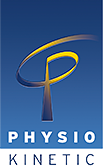When we see a client in our practice, we go through a series of important decisions. But one remains the most difficult, when do you focus on a short term ‘fix’ and then, when do you think about the long term?
Once we have a comprehensive history of the problem we will examine the area and develop a reasoned diagnoses. Straight away we then have to make a decision, do we concentrate on the injured area and continue to formulate a plan based on this, or do we continue to assess and find the reasons behind the injury and focus on the long term? Here lies the dilemma.
The main factors that will influence this decision are actually found out during our history taking and further signalled by our diagnoses. The most straight forward example to describe this is an acute muscle injury vs a gradual onset of knee pain.
For an acute muscle injury, it is most likely that initially we will focus on the injured tissue and be singularly focussed on managing that area, looking for quick, short improvements. These injuries are normally traumatic and come on suddenly and the explanation of the injury will reflect this. It would not make sense (and quite often you are unable) to start looking around the body for reasons why that muscular tissue has been injured. You wouldn’t put a footballer on a treadmill to look at running style the day after they have sustained a tear of their hamstring! Instead we identify the hamstring injury, get an accurate idea of the degree of injury, remove the factors that may worsen the injury (this may be running, or in extreme cases even walking) and immediately start to get that athlete moving in different ways. Quickly you would see improvements and then it logically makes sense to progress to looking at the long term and for reasons as to why they may have injured the hamstring area.
Conversely in the second example, a runner with a gradual onset of knee pain, it is logical not to get internally focussed on the injured area only. Instantly when talking to the runner we would see there was no clear reason why the injury occurred. We will most likely ask much more in depth questions as to the runners training history, their load management (see previous blogs) and look at the whole body to see why the knee is getting over loaded. This case would be appropriate to look at running style as there is likely to be a certain volume of running that the runner could do without pain. We then formulate a diagnoses and as before remove the problematic variables. Then we formulate the plan, involving rehabilitation for any of the issues we may have found with a focus on the long term improvement from the offset.
Obviously there are exceptions to these basic rules, but those exceptions still follow the same trends as above. You get an accurate diagnoses, remove the influences that could make the injury worse and then start the rehab process involving as much of the long term factors that you have identified as you can. It is more a question of when you look at the long term, not if!
So next time you are unfortunate enough to sustain an injury, think about the above to help you understand where your rehab focus needs to be!
If you have any questions please get in touch over on our facebook page!

